
‘Fred Wiseman has been my idol for a long time. In the 1970s it wasn’t all that easy to see his films. For a while I had seen only Basic Training (1971) and High School (1968). Nothing else. Titicut Follies (1967) was almost impossible to see because it was under a court injunction. Videocassettes had been introduced, but Wiseman’s films existed only on 16mm—ready to be slapped onto a projector or viewed on a flatbed. Until very recently, he was reluctant to transfer his films to DVD. I believe it was because that would have made them too easy to be seen.
‘When I was editing my first film, I visited Fred Wiseman in Boston. His offices in those days were on Lewis Wharf, and he very kindly allowed me to watch several of his films on a Steenbeck editing machine. At dinner in his home, one of his sons asked him whether he was going to show me “the two-hour, the three-hour, or the four-hour boring film.” Fred didn’t smile. But honestly, I had no problem with the length. For me, they could have been even longer.
‘I saw Fred again at the London Film Festival in 1978. He was showing Sinai Field Mission. My future wife, Julia Sheehan, and I went to the first screening at the National Film Theatre. Julia, also a Wiseman fan, had just gotten off an all-night flight from Boston, and promptly fell asleep next to Fred. She was mortified. I remember being mesmerized by the film and its “language.”
‘The cinder block buildings, the microwave dishes, and the injunction: to stop sunbathing on the modules. If Surrealist painters had to conjure an empty, featureless plain with pieces of driftwood, Wiseman was able to do away with the driftwood, the conjuring, and simply point the camera at reality. The results are disarming and even dismaying.
‘I learned about filmmaking at the Pacific Film Archive in Berkeley, California, where I spent a lot of time watching movies: a few documentaries and a steady diet of Dreyer, Hawks, Renoir, and Nicholas Ray. The documentaries I saw were by Buñuel, Herzog, and Georges Franju—not the Maysles or Leacock and Pennebaker.
‘Wiseman once asked me, “How could you possibly like my movies? They’re all filmed in wobblyscope,” his affectionate term for handheld camerawork. And he is right. His movies are stylistically ur-vérité. No narration. Available light. Fly-on-the wall. But Wiseman’s films prove a simple principle. Style does not determine content. He may be a direct-cinema guy in form, but the content is not valetudinarian but visionary and dystopian. Wiseman has never been a straight vérité “documentarian.” He is a filmmaker and one of the greatest we have.
‘I have jotted down some obsessions, themes, and predilections that recur in his films. These are not comprehensive but hopefully give some idea of what I love about his work.
1. Surface
‘We constantly think about the motivations of people—their dreams, ideas, hopes. This is not really present in Wiseman’s films. He shows things as they are. As they are manifest. He never asks anyone to explain anything, certainly not themselves. He never interviews anybody. Instead he functions as eavesdropper, listening in on conversations unraveling around him . . . And what amazing conversations they are. People endlessly tallying up senseless columns of numbers. There is a brief inkling that the mission in the Sinai is concerned with peacekeeping, that there is perhaps some larger purpose for it all, but in this film larger purposes shrink away, leaving us with a residue of meaningless ritual.
2. Real Time
‘We very rarely see examples of real time in the movies. There is the minute of silence in Godard’s Band of Outsiders (1964). But in Wiseman’s films, we are treated to many minutes of silence and to unbroken time. Earnest conversations about seemingly nothing ramble on and on. If movies generally compress time through cutting and editing, then in Wiseman’s films time feels extended. A minute of real time can feel interminable, or if you prefer, like an eternity. But I am reminded of a remark made to me by Sidney Coleman, a Harvard quantum field theorist, about the artist and designer Robert Wilson. Sidney said, “Slow is not boring. Only boring is boring.” The same could be said about these films. Slow, yes, but endlessly fascinating.
3. Length
‘Fred has gotten into countless fights with film programmers and television producers about the length of his movies. He is the Howard Roark of documentary. Like Ayn Rand’s protagonist in The Fountainhead (1943), he would rather blow up the building he designed than remove a doorknob. Change one frame, alter one image, try to reduce the length by one second, particularly if it’s already over four hours, and Fred will destroy the film rather than compromise. He is the ultimate auteur. Near Death (1989) is set in an intensive care unit at Beth Israel hospital in Boston. The viewer begins to feel his own mortality and to wither under the weight of the subject matter over the course of six hours. I, however, told Fred it should have been even longer. I was serious. For a Wiseman film to work it has to be long. Unendurably long. Intolerably long. It is hard to look at Wiseman’s version of reality. One has to be led there and forced to look at it on a leash with a muzzle.
4. Anti-Sociology
‘Many commentators have written about Fred as though he is a social scientist—a prolific chronicler of institutional behavior. But this gets it backward. Fred likes institutions like Fellini likes the circus. They are a backdrop or a metaphor for something else. I prefer to think of Fred as an entomologist who has poked his camera into some truly nasty termite pile and watches with bemused satisfaction as the termites scurry around carrying odd parcels and such. What are they doing? Can we ever know?
5. Irony
‘Irony is, properly considered, a weapon. Often it’s a way of showing a disconnection between what people think they are doing and what they are doing. Irony abounds in Wiseman’s films. No one, absolutely no one, really knows what he is doing. And Wiseman, the observer, is fascinated by a reality (hidden just below the surface) that nobody in the film seems to notice.
6. Religion
‘When Wiseman turns to “evangelical” subjects, as in Aspen (1991) and Essene (1972) as well as in Sinai Field Mission, we characteristically feel the absence of God rather than his presence. The preacher in Sinai Field Mission is instructing his soldiers that life has a purpose, that each man fulfills an important and valuable role, but everything he says and the context in which he says it seem to suggest the exact opposite.
7. Sex
‘Dreiser has nothing on him. Sex has never looked as tawdry and sad as it does in a Wiseman film. The lab technicians masturbating a monkey in Primate (1974). Humans are portrayed admirably as evil primates. The female veterinarians castrating a wolf in Zoo (1993) as a male janitor looks on nervously, his hands folded over his crotch. Fred has a gift for filming condom demonstrations. In High School II (1994), white middle-class students are shown how to put a condom on a huge black dildo. In Public Housing (1997), the students are black teenage mothers. This time the dildo is small and white.
8. Repetition
‘Every Wiseman scene recalls other Wiseman scenes. Look at High School and the hapless teenagers in gym class dancing to “Simon Says” (the 1910 Fruit Gum Company version) and the Ghanaians marching in Sinai Field Mission. Wiseman proves that redundancy is the spice of life. Everything recalls everything, but, more to the point, everything repeats everything.
9. The Meaning of Meaninglessness
‘Sinai Field Mission . . . a man with a large push broom is sweeping sand in the desert. What more can you say? Oh yes, it’s about the UN peacekeeping forces in the Sinai. Trapped inside a windowless bunker and surrounded by a chain-link fence and razor wire, the Texans, Finns, and Ghanaians try to keep the peace. After a short while, they inevitability start fighting with each other. The Store (1983) is an excursion into Neiman Marcus during the holiday season. The employee and employer birthday parties at the conclusion are surreal and desperate. Does it matter whether we are rich or poor, owner or lowliest worker? It’s all depressing. In Near Death, one of the terminal patients explains how she has finally found a way to lose weight. Dying. If you don’t pay attention, you might consider the film life affirming. Essene takes place in a monastery. A monk pursues a fly unendingly with a flyswatter. This is the height of boredom as religious ecstasy. When a Spanish teacher in High School drills in the line, “Sartre is an existentialist philosopher,” or a helpless welfare recipient in Welfare (1975) refers to Godot in the closing minutes of the film, I can imagine Wiseman smiling. These are his roots—not Grierson and Flaherty but Beckett, Anouilh, Ionesco, and Sartre, the theater of hopeless irony and the absurd. It’s no wonder he lives now in France. Wiseman’s films can be considered as extended essays on the meaning of meaninglessness. And they are incredibly bitter and funny. Really, really funny.
‘These forty-odd films are highly personal and idiosyncratic works. They create a world, equal to the worlds of Renoir and Hitchcock and Fellini. For me, Wiseman is the undisputed king of misanthropic cinema.’ — Errol Morris, The Paris Review
_____
Stills

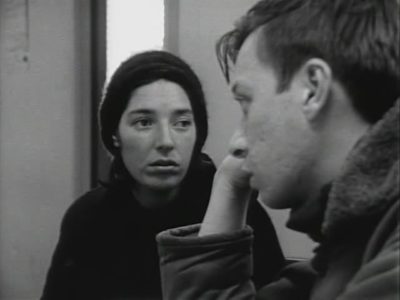


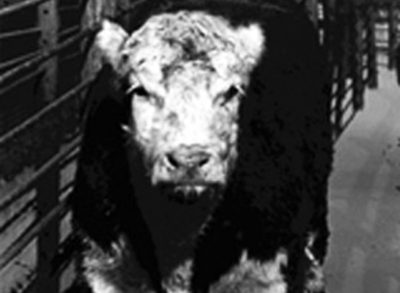

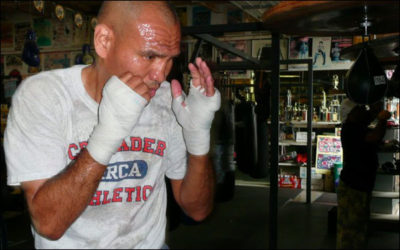
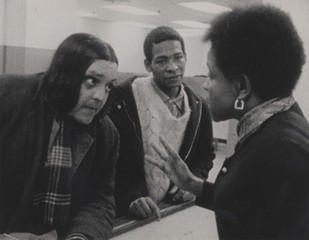

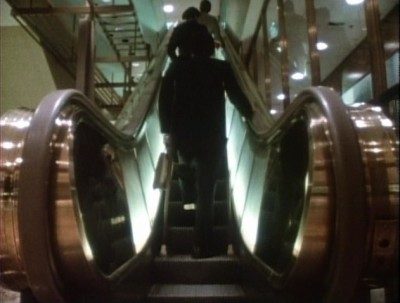
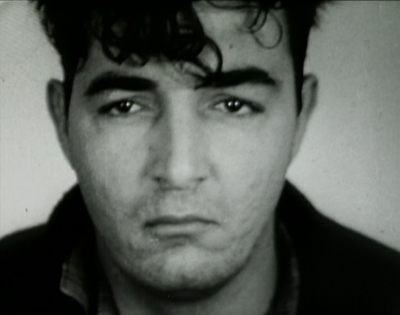


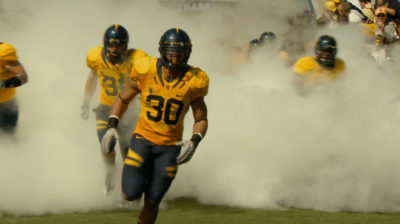


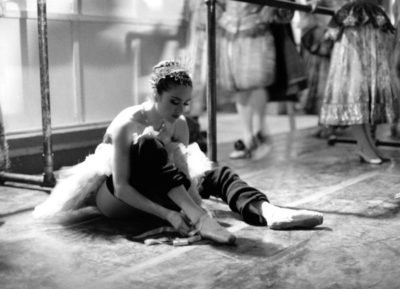

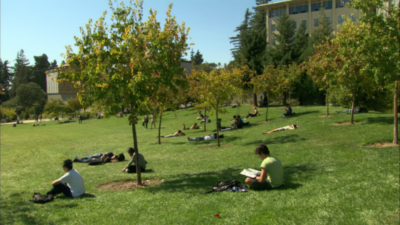
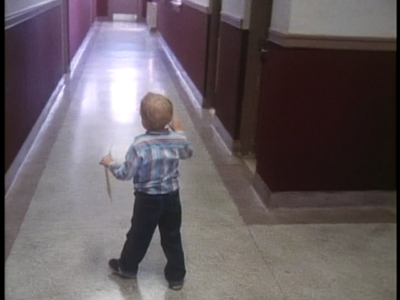
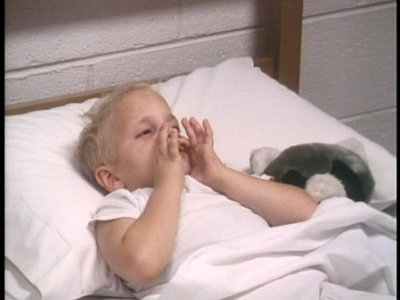
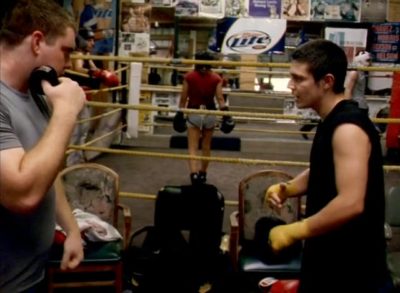
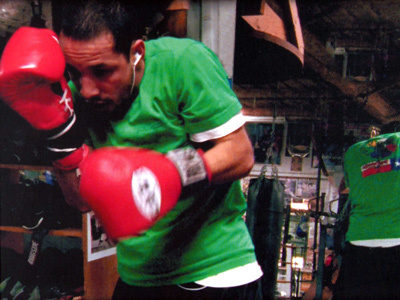
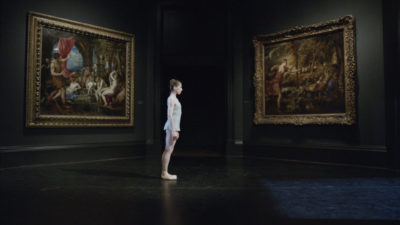
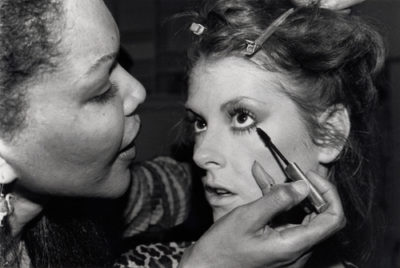
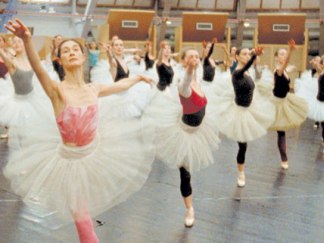
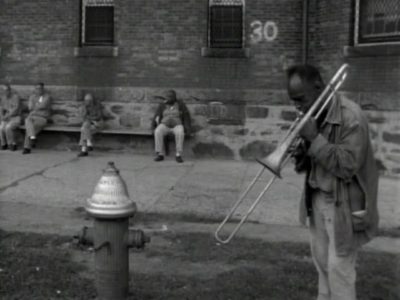



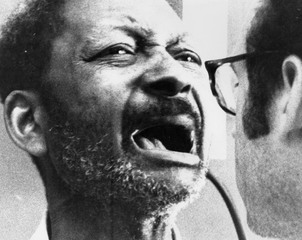

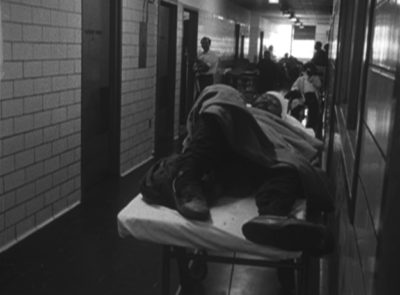






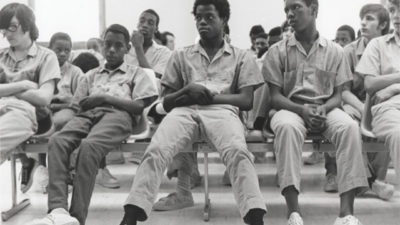
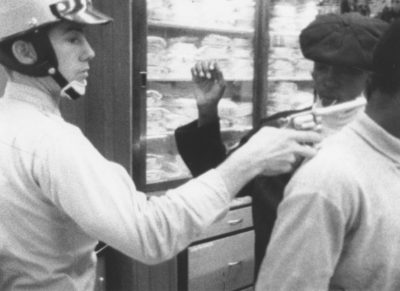


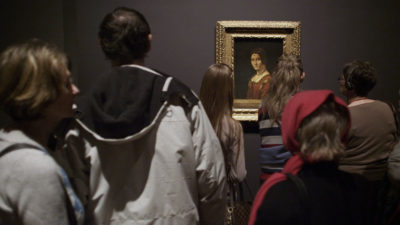

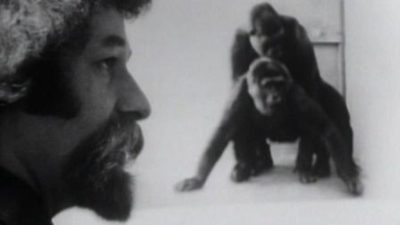



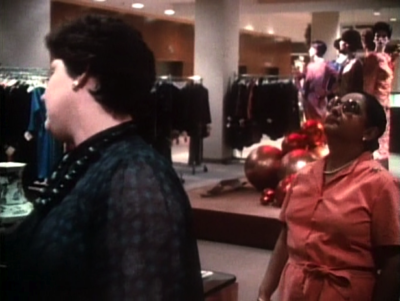


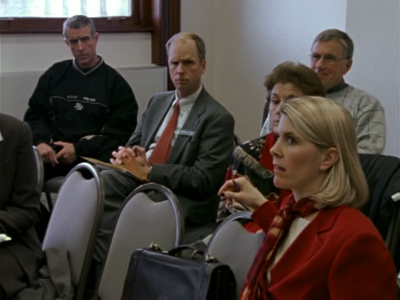


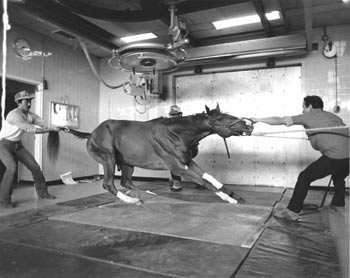

____
Further
Frederick Wiseman @ IMDb
Rederick Wiseman @ Zipporah Films
Pourquoi Frederick Wiseman est le plus grand cinéaste américain
‘One common misconception is that I’m a muckraker.’
8 Smart Things Frederick Wiseman Shared About His Career
Documentary Is Never Neutral
Frederick Wiseman On Editing
FW’s reddit interview
Frederick Wiseman by Nicholas Elliott @ BOMB
“Je découvre vraiment le film au moment du montage”
Critical Care: Dr. Frederick Wiseman
“It’s Impossible To Be Objective”
Frederick Wiseman Through the Decades
Frederick Wiseman: A Radical Take On Institutions
FW interviewed @ Slant
Reasoned Arguments: A Conversation with Frederick Wiseman
Tough Love and Revelation: The Films of Frederick Wiseman
Advice for filmmakers: Frederick Wiseman on controversy and inspiration
____
Extras
Frederick Wiseman Interview – The Seventh Art
Agnès Varda / Frederick Wiseman (Cannes 2010)
Frederick Wiseman’s Closet Picks
Q&A with Frederick Wiseman on his film Titicut Follies screening
______
Interview
from Filmmaker Magazine
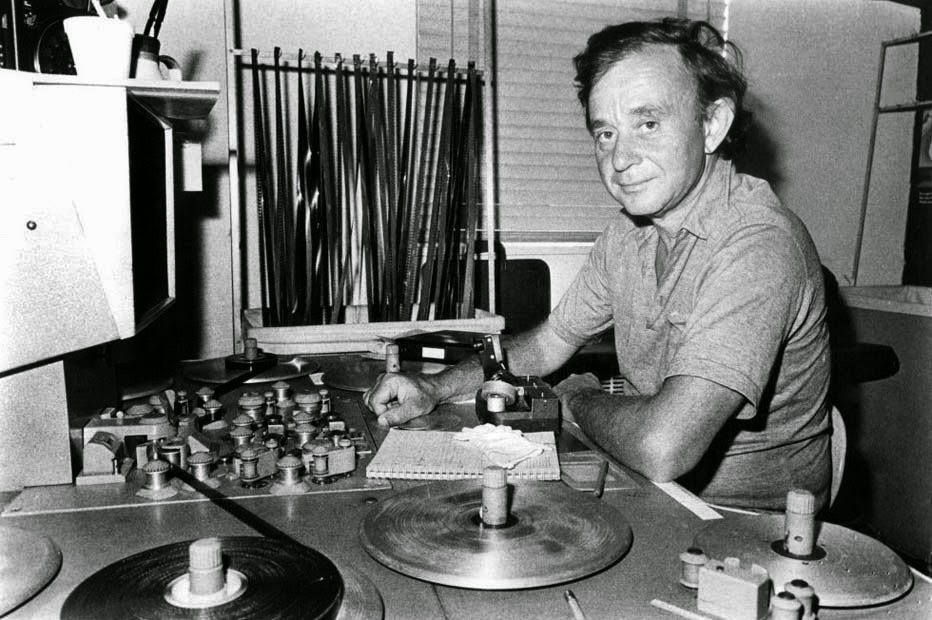
Filmmaker: You’re receiving the Legacy Award for Titicut Follies at this year’s Cinema Eye Honors. What is it like for you to recall that film 40 plus years later?
Frederick Wiseman: Well, it makes me feel how old I am. (Laughs) I’m glad to get the award. The Follies was made a long time ago, 46 years ago. I can recite all the dialogue. I can remember vividly the experience of being at Bridgewater and the legislative hearings and the trial. But I also have the same kind of intense memories of all the films.
Filmmaker: Are you able to separate your memories of the film from the litigation that held its release for so long?
Wiseman: They’re very separate. Making the film was one thing and the litigation was something else. The litigation was basically a farce, because the effort to ban the film—even though they succeeded for quite a while—was just an example of political cowardice and stupidity. I always thought of it as political theatre.
Filmmaker: What do you think it is about that film that has earned it a Legacy Award?
Wiseman: I guess the Awards Committee liked it and wanted to recognize the film. I am pleased that they did. They also know that I’m old. (Laughs)
Filmmaker: I’m sure it’s more than that. The film has stood the test of time.
Wiseman: Well, I’m glad it’s stood the test of time. Bridgewater was a horrible place. Although, compared to some of the other prisons for the criminally insane that I was familiar with at the time it was a Ritz Hotel. It may sound odd, but I don’t really think about the film that much, because I’m more concerned with what I’m currently doing always. Maybe when I stop working—which I hope never happens—I’ll be more sentimental about the past. But at the moment, it is just another film I made. It’s my first film.
Filmmaker: Your films have so many unanswered questions and so much room for interpretation. I’m curious how you interpolate within that process. When is your time to reflect?
Wiseman: Whatever “thinking” goes on occurs in the editing. There is not much time during the shooting to think about the implications and structure. I usually don’t begin to think about structure until I am six to eight months into the editing, and have most of the candidate sequences in close to final form. Also, I do not like to explain a film.
Filmmaker: I know you don’t.
Wiseman: Because I don’t think that’s my job. My job is to make the film as best I can, and what I think about the subject matter is what you see in the final film. That is my job as the editor. So much of film editing—or at least editing these kinds of documentaries—has absolutely nothing to do with technical issues. It has to do with identifying to yourself what you think is happening in the rushes. Obviously, it has to do with technical things as well, but at least 50% of editing my films has to do with an attempt at an analysis of human behavior. The basic question is “Why?” Why does somebody ask for a cigarette at a given moment? Is there an explanation for the choice of one word rather than another? What’s the significance of the dress that a woman is wearing? Why does a client come to a welfare center wearing his military uniform? Why does someone pause in mid sentence? Is there an explanation for a change of tone? I mean, these are the kind of evaluations one is always making in ordinary experience when you meet people. You have to make these kinds of evaluations in more concentrated form when you are editing. This same sort of evaluation is going on between us in this conversation. In film editing it is more formalized and constant.
Filmmaker: Do you enjoy the different meanings that viewers make of your films?
Wiseman: I don’t spend that much time with audiences, but I do from time to time. One of the ways I make a living is doing my little buck and wing in schools and colleges.
Filmmaker: What colleges do you lecture at?
Wiseman: Whatever college invites and pays me. I like to do some lecturing but not too much because it takes a lot of time and travel and is tiring. Over the years I’ve talked in many colleges, universities and public libraries.
Filmmaker: What do you typically have to say to your audience about documentary filmmaking?
Wiseman: One or more of my films are shown before I arrive. A film is also shown the day that I am present and I will use that to illustrate my talk. Also I sometimes show excerpts. I often take excerpts and reconstruct with the class—or the audience as the case may be—what my choices were in the editing, and why it was shot the way it was shot. One of my cliché responses is that editing is talking to yourself. So what I do is try to reconstruct with the audience the conversation I had with myself when I was editing, where I keep asking them the same “Why?” I ask myself.
Filmmaker: Does that question usually find a logical response for you? For example, Y follows X because that’s its chronology in time?
Wiseman: Editing, for me, always has been a combination of being very deductive and very associational. And if I’ve learned anything over the years, it’s that I should pay as much attention to the thoughts at the edge of my head as I do to the formal, logical and deductive. All the clichés are true. You can dream the cut. It can pop into your mind when you’re walking down the street, or taking a shower. I’ll tear what’s left of my hair out because I can’t resolve an editing issue. And I’ll go for a walk or I’ll have a nap or I’ll go back home and come back the next day, and “My God, there it is.” Without consciously working on the problem I will have been working on the problem. And whether the result is a good one or not, I don’t know. But it resolves it satisfactorily as far as I’m concerned.
Filmmaker: I’m interested in the importance of constraints to your work. You set rules for yourself, like setting your films within a defined geographical space. Are there are any other constraints that you place on yourself in the shooting or editing process?
Wiseman: Self-imposed constraints?
Filmmaker: Yes.
Wiseman: I don’t know if this is a constraint or not, but I make the choice of not following one person. And I don’t accept any constraints from the subject, other than if somebody doesn’t want to be photographed I accept that without argument. I don’t accept any network constraints about length.
Filmmaker: And PBS has been pretty good to you about honoring that request.
Wiseman: PBS has been extremely good to me. The first movie on PBS was Hospital in 1968…So it’s going back 44 years there. And they’ve never asked for any changes or any cuts. But I took a hard line about that at the beginning. It hasn’t been challenged. And they’ve been very generous. Near Death is six hours, and they ran it all at once.
Filmmaker: Much of the complexity of your films comes from their duration, from the ambiguities that arise during the lengthy conversations between your subjects. I’ve heard you speak of preserving that complexity as matter of responsibility to your subjects. Can you talk about that?
Wiseman: I have an obligation to the people who have given me permission not to simplify the material in the service of some personal ideology which they may not share. And I take that very seriously, because when someone has confidence enough in me to let me hang around—either the person that’s in charge of the place or the person who’s involved in a particular sequence—I feel an obligation to treat them fairly (however subjective that term may be). Take Welfare, for example—and it is also true for many of the other films—the only time I ever saw the clients was when the sequence that they were in was shot. I mean, it’s not like with the ballet company where you’re hanging around for 12 weeks and you’re seeing a lot of the same dancers day in and day out, or La Comédie-Française, where I attended many rehearsals with the same actors. The workers at the welfare center knew that a film was being made and I saw them frequently, but the clients I often only saw once: the moment when the sequence they were in was shot. Nevertheless, I was able to shoot without objection the meetings between the client and the worker when very personal and intimate aspects of the clients’ lives were revealed. When I use such a sequence I feel an obligation to make sure that the sequence—again, it’s a very subjective judgment—fairly represents what I think was happening. For example, there is a sequence early in Welfare with a couple that is seeking emergency relief. The woman has a very unhappy family history and the man is a former welfare worker, is clearly lying about his personal experience thinking that his knowledge of the welfare system will make it easier for him to qualify. The sequence is funny and it’s sad and it’s very revealing about the welfare worker and the thin line between the welfare worker and the client. There’s a lot going on. But the original sequence was maybe 40 minutes. It’s about eight minutes in the film. So in cutting it I wanted to retain all of those complex relationships, but at the same time I had to condense it without losing the complexity and ambiguity of the actual encounter.
Filmmaker: I notice a difference in tone between your early films and your recent ones. Titicut Follies and Welfare, for example, reveal high levels of incompetence and sometimes injustice in the institutions they represent, whereas La Danse and Crazy Horse seem more focused on the successes of the institutions they represent. It’s tempting to say you’ve gone from being more cynical to being more optimistic. I know this one Errol Morris quote…
Wiseman: It’s a great quote. (Laughs)
Filmmaker: He referred to you as “the undisputed king of misanthropic cinema.”
Wiseman: But it’s a description of him. It’s not a description of me. Well, it’s not for me to say it’s not a description of me. But it’s certainly a description of him. (Laughs)
Filmmaker: Do you think there’s some truth in saying your outlook on life has changed over the years?
Wiseman: I resist saying that there’s a change, because I think each film is a response to the subject matter of the film. And I didn’t do a film about a great ballet company in 1967. If I did a film about the New York City Ballet in 1967 when Balanchine was alive, it would have been what you call an “optimistic” film because it would have been a film about a great artist at work. Similarly with the film about the Paris Opera Ballet. It is one of the great ballet companies of the world. For me it is irrelevant whether I made it in 1968 or made it in 2007, because the final film is a response to the experience I had with the dance company. So I don’t think it reflects an overall change. If I hadn’t made Titicut Follies in1966 and went to Bridgewater today, technically the film might be better, but I don’t think that the point of view that the film expressed would be any different if I found exactly the same things that I found in 1966.
Filmmaker: Is there a difference in the way you’re choosing your subjects?
Wiseman: Well again, it depends on the context in which you look at that issue. If you look at it that I’m choosing more arts-oriented subjects, then you can think I’m abandoning the earlier subjects. There were some French critics who didn’t like La Danse, for example, because it wasn’t “Wisemanesque”. What “Wisemanesque” is to them, or meant to them, was a film showing poor people being exploited by the state. Which means that they haven’t really understood some of the earlier films either. Because I think it’s much more complicated than that. The point being that each film is a response to the experience, and not because I’ve gotten softer or I’ve gotten less cynical or more optimistic. I like to think that I’m responding in each case freshly to what I find. I am also trying to make films on as many different aspects of contemporary life as I can and do not feel in any way restricted to a particular subject matter.
______________
24 of Frederick Wiseman’s 50 films
_________
Titicut Follies (1967)
‘”Titicut Follies” is one of the most despairing documentaries I have ever seen; more immediate than fiction because these people are real; more savage than satire because it seems to be neutral. We are literally taken into a madhouse. Inmates of varying degrees of mental illness are treated with the same casual inhumanity. There is an old man named Jim who is constantly taunted by the guards, whose uniforms are disturbingly similar to a policeman’s. While he is being shaved with fast, painful strokes by the barber, the guards needle him: “Why’s your room so filthy, Jim? What’s that you said, Jim?” They are bullies who have their victim pinned and helpless. When Jim is returned to his room, it is an absolutely empty cell. And Jim is naked. It appears that the inmates are deprived of clothing much of the time because that is cheaper and makes security easier. It is not explained how naked confinement in a barren cell cures mental illness and indeed this hospital seems to come from the Middle Ages. Massachusetts legislators have tried for two years to suppress Wiseman’s film. They say it invades the privacy of the inmates, and perhaps they have a point. It is hard to imagine more humiliating and pathetic scenes, and perhaps they should not be shown for profit or offered to the public. But perhaps they should, even though “Titicut Follies” will dismay and disgust many of those who see it. Few of us have the slightest idea of conditions in the nation’s mental prison-hospitals. The film is not of high technical quality. It was shot with available sound and light under difficult conditions. But its message penetrates all the same. One “paranoid” patient, told he has shown no improvement, argues that the prison is making him worse, not better. This sounds like the simple truth, and the film leaves us with the impression that institutions like Bridgewater are causing mental illness, not curing it.‘ –– Roger Ebert
Trailer
Excerpt
Excerpt
_________
High School (1968)
‘The rambling hallways of the school make up an isolate interior that stands as symbolic manifestation and aggravating circumstance of the isolate interiors betrayed by adolescent faces over the next 74 minutes. One might consider High School a reckoning with normalcy, merely a portrait of The Way Things Are; at the time of release, audiences likely perceived High School as a “we-can-relate-to-this” story. Indeed, and necessarily, the film represents a time capsule — a cinematographic record not only of those sorts of characters frozen immemorial in Lions Club halls’ gilt-framed photographs but also of the attitudes and fears of an era. Only from the vantage of the future has High School assumed the form of secret look or infiltration. Nevertheless it remains the single Wiseman film whose milieu its audience is most likely to have experienced collectively.’ — MUBI
Excerpt

___________
Law and Order (1969)
‘One of the best of Wiseman’s documentaries, an impressionistic account of the daily police routine in a predominantly black neighbourhood of Kansas City, Missouri. Although violence abounds, with a black prostitute almost strangled by a vice-squad cop, the film avoids grinding axes about police brutality. Instead, sitting back and coolly observing the situation from multiple perspectives, it suggests that any sickness in the forces of law and order is a symptom of disease in the society that breeds them.’ — Time Out (London)
Excerpt
____________
Hospital (1970)
‘Frederick Wiseman’s pioneering documentary shows the daily activities of a large urban hospital with the emphasis on the emergency ward and outpatient clinics. The cases depicted illustrate how medical expertise, availability of resources, organizational considerations, and the nature of communication among the staff and patients affect the delivery of appropriate health care. Though originally released more than 45 years ago, Hospital remains as relevant, revelatory, affecting and important as ever; it is one of the seminal works of American non-fiction cinema.’ — DIA
Excerpt
Excerpt

_________
Juvenile Court (1973)
‘JUVENILE COURT shows the complex variety of cases before the Memphis Juvenile Court: foster home placement, drug abuse, armed robbery, child abuse, and sexual offenses. The sequences illustrate such issues as community protection vs. the desire for rehabilitation, the range and the limits of the choices available to the court, the psychology of the offender, and the constitutional and procedural questions involved in administering a juvenile court.’ — Zipporah Films

__________
Primate (1974)
‘Wiseman’s 1974 film Primate serves as a useful corrective to those who would still describe the filmmaker’s cinema as “direct.” First, with its assertive, masterful use of montage, it represents a new formal complexity in Wiseman’s work as an editor. From the opening sequence – a rapid, rhythmic succession of portraits of notable scientists, an exterior shot of Emory College’s Yerkes National Primate Research Center, and then a large, standing gorilla – the viewer discerns a particular voice, a conspicuous point of view, if not exactly an agenda or intent. But second, Primate also examines subject matter that is the most extreme Wiseman had approached since his first film, Titicut Follies—extreme not only in the sense of its often harrowing images, but also in its intricate configuring (and re-configuring) of the spectator’s identification.’ — Not Coming

__________
Welfare (1975)
‘His masterpiece, perhaps, is Welfare, which looks at the New York benefits system from the point of view of the officials administering it and the claimants crowding their offices. The result is both mind-boggling and eye-opening. Mind-boggling because this is clearly a bureaucracy pitted against people least fit to deal with it; eye-opening because those running it are not inhuman and frequently do everything they can to help. Any half-hour of this long film provides revelations, like the girl claimant who is told by her interviewer that he’s looking after two and a half million people and that if a couple of thousand don’t get what’s due them, he’s doing a good job. Or the German immigrant who says that God only helps you if he wants to and that, under the circumstances, “I’d better look for a nice place to hang myself.”‘ — The Guardian
Trailer
Excerpt
_____________
Meat (1976)
‘MEAT is a study of one of America’s largest feed lots and packing plants, and both is and isn’t what you expect it to be. Wiseman shows us how cattle are auctioned, the operations of a feeding lot, the care and feeding of the animals, the storage and packing of meat, and even union meetings and pricing arrangements. As always he treats his viewer as a person of intelligence who can put together his own pattern of meaning without narration. And as always he leads us to probe ourselves to see how we feel about what we are seeing on the screen. Like Wiseman’s earlier films, MEAT is disturbing, revealing, surprising — and masterful cinema.’ — Ken Wlaschin, London Film Festival

_________
Model (1980)
‘Model begins at and continually returns to an elite modeling agency on the Upper East Side of Manhattan, where applicants offer their portfolios to somewhat clinical, but constructively critical employees. Oddly (at least to an individual with no modeling experience), models make appointments as easily as one might schedule a visit to the dentist; there appears to be little difficulty in getting agents to view a portfolio. Several women aren’t nearly tall enough (5’6 being the minimum height requirement, a minimum that seems laughable by today’s 5’11, Gisele-influenced standards) while others are advised to shoot a greater variety of photographs for their portfolio (softer, more dramatic, a touch of realism, etc.). Most noticeably, it’s a run of the mill interview—questions are asked about previous experience, and applicants calmly accept advice on where their specific “look” may earn them greater opportunities.’ — letterboxd.com

_____________
The Store (1983)
‘THE STORE is a film about the main Neiman-Marcus store and corporate headquarters in Dallas. The sequences in the film include the selection, presentation, marketing, pricing, advertising and selling of a vast array of consumer products including designer clothes and furs, jewelry, perfumes, shoes, electronic products, sportswear, china and porcelain and many other goods. The internal management and organizational aspects of a large corporation are shown, i.e., sales meetings, development of marketing and advertising strategies, training, personnel practices and sales techniques.’ — Zipporah Films
Excerpt

____________
Adjustment and Work (1986)
‘Wiseman enumerates the sights and sounds of Talladega, Alabama – the railroad tracks, quiet streets and homes, a few shops downtown – almost as if to list those things most of us might take for granted. Of the four films in this series, Adjustment & Work is the only one that focuses entirely on adults—specifically adults who have recently lost their sight (and hence are adjusting to this change) and those without sight or hearing who are learning skills in order to enter the workforce.’ — letterboxd.com
Excerpt
____________
Blind (1987)
‘Blind is one installment in a four-part series Wiseman shot in and around the Alabama School for Blind and Deaf in Talladega, Alabama. In its stylistic particulars, but also in the very gesture of making four films about a single institution, it inaugurates a change in tone, closely tied to a change in subject. To put it roughly, in the mid-1980s Wiseman turned from making films about institutions about which he and his core audience were typically skeptical (High School, Basic Training, Meat, The Store, etc.) to engage at length with one that few people of conscience, whatever their political tendencies, would seriously object to. While far more than an advertisement, Blind leaves little doubt that the Alabama School is a humane and progressive institution. Its goal is to educate blind youth both to cope with their disability and to enter the American workforce. Its students appear to come from a variety of socioeconomic backgrounds, and a substantial portion are African-American; its teachers and administrators seem uniformly competent and kind. Thus Blind is deprived of one of the primary sources of interest in many of Wiseman’s previous films—the ethical or philosophical interest of passing judgment on the institution itself. What Blind loses in dialectical energy, however, it gains in existential power. One of its most remarkable aspects of the film is the amount of suspense and human drama Wiseman generates with just a minimal presentation of the children’s environment and their interactions within it.’ — Not Coming
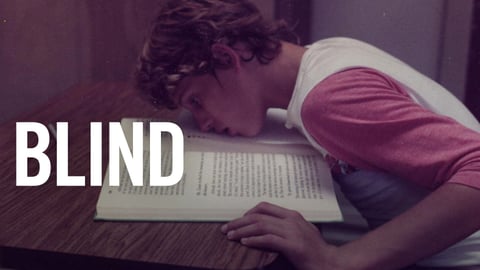
_________
Missile (1988)
‘Taken at face value, Missile lacks the narrative feel of Wiseman’s other works. No individual or event unifies the film’s scenes and it lacks conflict or resolution of any kind. This is a wildly superficial reading of the film, however. Missile externalizes its narrative; it exists only in the mind of the audience. Removed from the context of the viewer’s mind, the film documents a rather boring training class. Wiseman never fully addresses the immense gravity of the situation directly in the film, choosing instead to work with subtlety and implication. Missile documents men and women being trained to wield the most destructive force on the planet. This idea is unspoken but omnipresent, pervading each scene regardless of how mundane the matching onscreen action is.’ — Not Coming
the entire film
__________
Belfast, Maine (1999)
‘A month in the life of residents of an average American city, this film is also a summary of the first three decades of Frederick Wiseman’s career as a documentary filmmaker. Various institutions that he has previously treated in his works come together here, from a high school (High School, 1968) to the food processing plant (Meat, 1974). Wiseman filmed in Belfast in October 1996, and then took the more than 100 hours of footage and spent 13 months editing it down to this four-hour epos. Recurring elements include physical and mental health care and the food industry — an impressive sequence of over 10 minutes about a sardine processing facility is a film unto itself. Everything is filmed in Wiseman’s distinctive style: no talking heads, commentary, or music, only images taken directly from reality. As in real life, there is no narrative, but rather just things happening. Wiseman puts this town and its residents under the microscope like a true scientist — he is detached, but intensely interested all at once. This combination allows his subjects to go about their lives under the surveillance of his camera.’ — idfa
Excerpt
___________
Domestic Violence (2001)
‘‘Have you been threatened with death?’ and ‘Have you been sexually abused?’, a social worker objectively asks a woman who has just run away from home. All questions are answered affirmatively. Frederick Wiseman took his camera and mingled with a large number of women who have been abused mentally and physically by their husbands and finally had the courage to go to The Spring crisis centre in Tampa, Florida. Wiseman was present during all the stages: in the office with the emergency phone lines, during the apprehension of an offender, the arrival of the ambulance, the police interrogations, the intake interviews, therapeutic sessions, staff meetings at The Spring and the school activities for children in the crisis centre. As always with Wiseman, nobody talks to the camera, but he minutely and extensively registers how the women, after many years of humiliation, start building up a new life.’ — idfa
Excerpt
____________
The Last Letter (2002)
‘THE LAST LETTER is based on a chapter of Vasily Grossman’s novel Life and Fate. It is 1941. A Ukrainian ghetto has fallen to the Nazis and all of its Jewish residents are slated to be murdered. In the midst of the impending horror, the town’s physician, a woman named Anna Semionova, dictates one final letter to her son, who is safe outside of enemy lines. The letter, with its detailed observations of daily life in a ghetto,reveals the fear, courage, frailty, compassion and dignity of this woman as she reviews her life and faces her death.’ — the party
Trailer
____________
La danse (2009)
‘The Paris Opera Ballet is one of the world’s great ballet companies. The film follows the rehearsals and performances of seven ballets: Genus by Wayne McGregor, Le Songe de Medée by Angelin Preljocaj, La Maison de Bernarda by Mats Ek, Paquita by Pierre Lacotte, Casse Noisette by Rudolph Nureyev, Orphée and Eurydice by Pina Bausch, and Romeo and Juliette by Sasha Waltz. The film shows the work involved in administering the company and the coordinated and collaborative work of choreographers, ballet masters, dancers, musicians, and costume, set, and lighting designers.’ — Zipporah Films
Trailer
___________
Boxing Gym (2010)
‘Like all of Frederick Wiseman’s films, his latest has a title that seems to say it all: “Boxing Gym” is basically an hour-and-a-half of sights and sounds from an Austin area boxing gym. As usual, though, there’s more going on here. In presenting glimpses of different trainees – be they kids enjoying a fun sport, ordinary folks getting a workout, or actual fighters preparing for their next bout – “Boxing Gym” takes on a meditative quality, but that mesmerizing quality is eventually breached when the real-life violence of the Virginia Tech massacre thousands of miles away intrudes on the boxers’ world and becomes a point of discussion. The legendary director, whose films include such classics as “Titicut Follies,” “High School,” and “Public Housing,” has made the exploration of the nature of American institutions his great artistic project, and the boxing gym is a manifestation of one way violence presents itself in ordinary American life, so when the news of a different kind of violence, both anathema and analog to some of the issues raised in the film, gives the film an additional, haunting dimension.’ — IFC
Trailer
Excerpt
_____________
At Berkeley (2013)
‘Frederick Wiseman’s new documentary, “At Berkeley,” isn’t the movie for anyone who still has nightmares (as I do) about college classes missed and exams unprepared for. The movie centers on the University of California at Berkeley during an ongoing state of economic siege resulting from a decrease in state-government funding. The film, like most of Wiseman’s films, is about the life of an institution: the rules, principles, and ideas that constitute an institution, and their connection to the lives of people who realize it, manage it, and depend on it. “At Berkeley” is also an uninhibited love poem to the idea of the university—or, rather, to a particular side of university life. Wiseman’s portraiture is analytical, but his analyses are oriented and organized by a governing principle: in this case, the way that universities foster dissent and protest and, in the process, defang that dissent and protest.’ — Richard Brody
Trailer
Frederick Wiseman on “At Berkeley”
_____________
National Gallery (2014)
‘Frederick Wiseman’s monumental documentary study of the National Gallery in London makes it look like a secular cathedral, full of hushed grandeur. The film is presented with Wiseman’s habitual clarity and austerity: no voiceovers, no obvious direction or overall “story”, just a succession of unhurried scenes – though it is slightly shorter than his recent work – and an emphasis on talking heads and professional expertise. There is a cerebral calm. Often, as we are permitted access to a budget meeting or PR discussion, an art-history lecture, nude life study or some craftsman’s minutely exacting restoration work, you will be intensely aware of the gallery’s background silence, which is as an almost audible hum. Maybe it is the lighting or the air-con, or the distant bee-like murmur of the public in some far-off exhibition space, or maybe even the distant traffic of Trafalgar Square. We begin with an intriguing address on the subject of a work from the Middle Ages, an altarpiece designed to be seen in a church. These images were drenched in belief. Now, in our secular age, the gallery enacts this religious impulse and religious rhetoric. Wiseman begins with a succession of shots of the paintings and portraits, and juxtaposes these with the gallery visitors: they are the pilgrims of art and civic high seriousness. The curators and scholars are generally heard speaking with an echoey tone – like a priest’s address in church. An intriguing and valuable record.’ — The Guardian
Trailer
_____________
Ex Libris (2017)
‘Ex Libris: New York Public Library has the drive of a vociferous reader checking out and renewing the maximum number of books their card will allow. Its running time of three hours and 17 minutes is generous enough to succeed on multiple levels. The most prominent theme is the divide between rich and poor, and what the NYPL means in different neighbourhoods. The gorgeous main branch on Fifth Avenue with its marble lions serves a different function than the outposts in the economically disadvantaged outer boroughs. On Fifth Avenue, a “Books at noon” guest like Richard Dawkins will wax about the Enlightenment; off Kingsbridge Road in the Bronx, the community huddles up for job interview tips.
‘The only recurring characters are the caring and determined administrators (some googling puts faces to names; by and large Wiseman doesn’t care for formal introductions) who agonise over the budget and try to anticipate changes in digital technology. There are side trips to speciality branches, such as Lincoln Center’s Library for the Performing Arts, Harlem’s Schomburg Center for Research in Black Culture, the Mid-Manhattan Library’s fabled picture collection and the Braille and Talking Book Library in Lower Manhattan. Most of the visits focus on a community activity or guest speaker about a panoply of topics (sexual innuendo at Jewish delicatessens, the logistics of deaf interpretation at theatrical events, misguided Marxist defences of slavery among 19th-century southern intellectuals, Gabriel García Márquez) and each one is absolutely fascinating.’ — The Guardian
Trailer
_______________
Monrovia, Indiana (2019)
‘Monrovia, Indiana explores a small town in rural, mid-America and illustrates how values like community service, duty, spiritual life, generosity and authenticity are formed, experienced and lived along with conflicting stereotypes. The film gives a complex and nuanced view of daily life in Monrovia and provides some understanding of a way of life whose influence and force have not always been recognized or understood in the big cities on the east and west coasts of America and in other countries.’ — FilmDoc
Trailer
Excerpt
Excerpt
____________
City Hall (2020)
‘”City Hall” is unique in Wiseman’s canon for having, in [Mayor] Walsh, something approaching a central character; usually the setting of the movie serves that role. What happens here is something more entangled and curious. The ideals of the man and the actual practices with which they’re borne out are in quiet tension with each other.’ — Rolling Stone
Trailer
_____________
Menus-Plaisirs – Les Troisgros (2023)
‘During the summer of 2020, I stayed at a friend’s house in Burgundy for a month. To thank my friends, I looked in the Guide Michelin for a good restaurant nearby. I found Troisgros and we had a great lunch. After the meal, the Chef, César Troisgros stopped by our table. We thanked him for the delicious meal. Without planning, I suddenly asked him whether he would consider having a documentary film made about his restaurant. He said he would think about it and came back a half an hour later and said, “why not?” We then exchanged some letters, and he granted me formal permission. I waited to shoot the film until spring of 2022, when the Covid epidemic waned. Making a film about a 3-star Michelin restaurant had always been one of my fantasies. Also, I thought a film about a restaurant had links to my institutional series.’ — Frederick Wiseman
Trailer
Excerpt
Excerpt
Excerpt
*
p.s. Hey. ** Charalampos, Hi. Thanks. I’m just trying to figure what would be the right publishing situation. It’s a very short book(let). Cool, good vibes back from my usual desk in its usual place in Paris. ** Joe, Hey. There’s not really lateness around here. Well, unless I ever am on my end. Yes, that’s what I imagined about your process. Has your process changed significantly since those early books you so generously shared here on the blog years ago? Physically, your actual books have evolved since then, yes? Mm, I don’t know about the TMS stuff. I’m not even sure I know where that material is, but maybe I’ll have a hunt. Could be interesting, for me too, yeah. Thanks for wanting, man. Happy that you’re a fellow Kristof dude. Warmest hugs from here. ** Harper, Hi, Harper. Great, enjoy and max out these coming weeks. I was thinking, oh, working in a cinema, nice, but then I saw chain cinema, and I was, like, oh, okay, yeah. I like Purdy, and I agree with you. My favorite is ‘Eustace Chisholm …’ Now that’s a wild book. What are your faves or recommends, as I haven’t read all of his books? ** Jack Skelley, Jack Yer Booty. I hope Zac and I will get to LA in later April with the film, but it depends on if everything can get finished on schedule. Publisher, date! Okay, I’ll be patient until Saturday. You joke about ‘Badlands’, I pray. Sometimes Dennis Don’t Wear White. ** Otto, Hi, O. I don’t know, the boy buried in a ball pit has interesting visual possibilities maybe. Thanks about PGL. I think the new one is even much better maybe. ‘Paper Cut’, rules, yes, I forgot. I’ll listen to ‘The Ocean’ when I get out of here, thank you, thank you. Here’s a song for you. ** _Black_Acrylic, It’s good. Yeah, I know, it’s hell being over here when so many of the best books are published way over there, for me too. ** Sarah, Hey, Sarah! Oh, they’re showing Little Caesars? Wow, I didn’t know that. Very cool if true. Little Caesar was a lit/art magazine, so it had all kind of things in it. I didn’t write very much in it myself, sometimes about things I was into and occasionally a poem of mine. Not like ‘I Apologize’ in ‘Try’. That was based on a real zine of the time called ‘Raised By Wolves’. I’m good, close to finishing the film, yay! Whoa, big congrats on finishing the novel! That’s amazing! What are you going to do with it? That’s exciting. How long were you working on it? I really didn’t like ‘American Fiction’ either, so high five. I’ve never read Everrett, I don’t why, he’s just never been on my radar. I should. Okay. Thank you, and happiness galore! ** Dominik, Hi!!!! Sure, of course. Wow, a week with mom. And Prater! I want to hear all about that, obvs. Hopefully your love will age infinitely better than poor Edward, yikes. Enjoy being social. It’s good for the soul probably. Love convincing himself not to be so stingy with his OnlyFans account, G. ** Joseph, Hi, J! Excellent to see you, sir! ‘Mr. Crabby You Have Died’ is totally a surprising big charmer. It’s already hot in the southeast? Stuff like that is so scary. Keep plenty of iced tea handy. Unsweetened. Enjoy being grounded, and I await your good news! ** Dmitry Samarov, Hi! Thank you for coming in, and thank you for writing so smartly about the book. That’s what lead me inside it. My pleasure to be able to share it. I hope all is very, very with you. ** Misanthrope, Sounds double lovely to me. A nice French cop told me not to do what I was doing very nicely just yesterday. ** Justin, Hi, Justin. I do know that story, although I haven’t read the piece you linked to, and I will. Really haunting story. It does have potential. I was thinking about that when I read about it a while ago. Hm. Thank you! You good? ** Brightpath, Hey. Yeah, safer to stick to the earlier Wenders so as not to waste precious time. Godard is so wild and so all over the place in the best way. One can get very, very into him. Very cool about the noise book and the acceptance. Oh, hm, there’s, like, this spot you want to hit where you don’t just reiterate what the album is/does, but, at the same time, you don’t want to get too self-indulgent and write about what it specifically meant/does to you, so a kind of colorful, individualist read, and it’s not hard to nail. That’s not helpful though. What’s your instinct about it? Are you reviewing a particular album? Is it something you’re choosing? ** Steve, The one on A is good, or always has been to me. Oh, right, yes, pre-online record and book buying. That was a kind of sweet spot, yeah, I feel that. ** Darby☕, Coffee, just what I need more of. Popcorn game … I guess not since I don’t know what that is. First of all, your book sounds absolutely incredible! I love the idea so much. What a great form idea. Feels so potentially rich on multi-levels. Wow, kudos. As for advice, it’s really hard to know what to say, or at least here in the rushing p.s. context. I sort of feel like you’ll know if it’s working or not. You’re very attentive and sharp about things, and your description sounds like you really understand what you want. Maybe if you give specific points/examples, it might be easier to give you my two cents. But, really, that sounds amazing! ** Bill, Yep, cool. No, I did not know about a new Joy Williams! How could that have slipped by me? I was going to ask you what it its, but I’ll go search and find out. Wow. Thanks. Evenson is so prolific, it’s crazy. And he teaches full time. He must a maniac. ** Okay. Today you get a whopper of a post about a whopper of a filmmaker, the great and powerful documentarian Frederick Wiseman, who’s still making amazing films in his 90s, and, thus, also a hell of a role model for younger artists who think they need to shoot their artistic wad while they’re young. Please have at the above, and I’ll see you tomorrow.

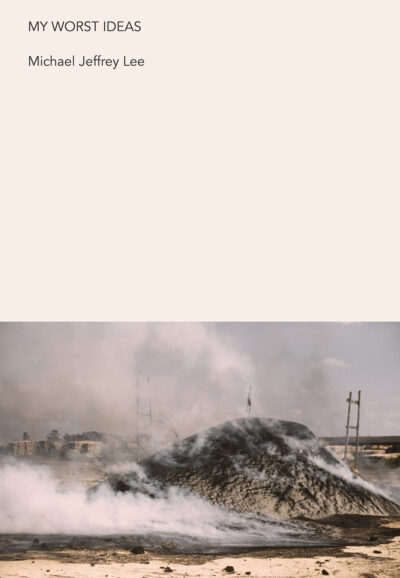 Michael Jeffrey Lee My Worst Ideas
Michael Jeffrey Lee My Worst Ideas



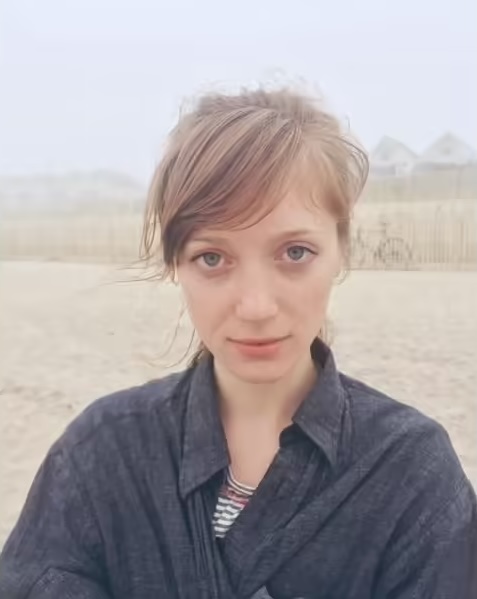
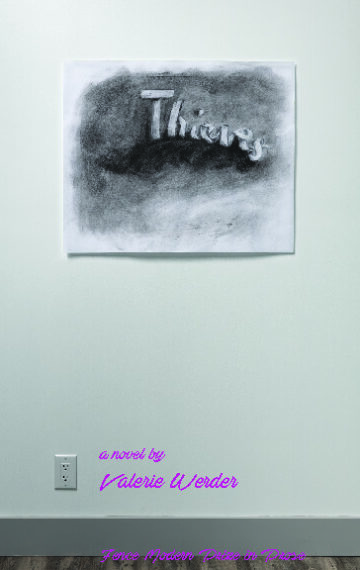 Valerie Werder Thieves
Valerie Werder Thieves
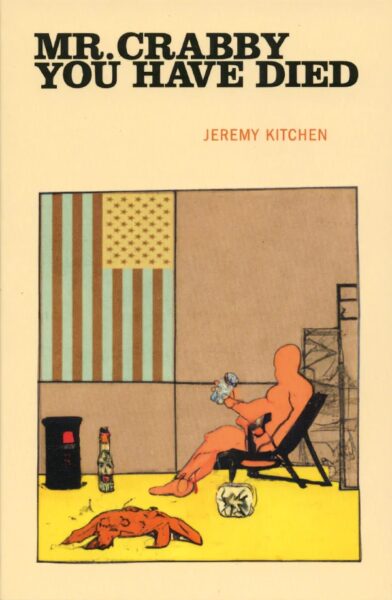 Jeremy Kitchen Mr. Crabby You Have Died
Jeremy Kitchen Mr. Crabby You Have Died
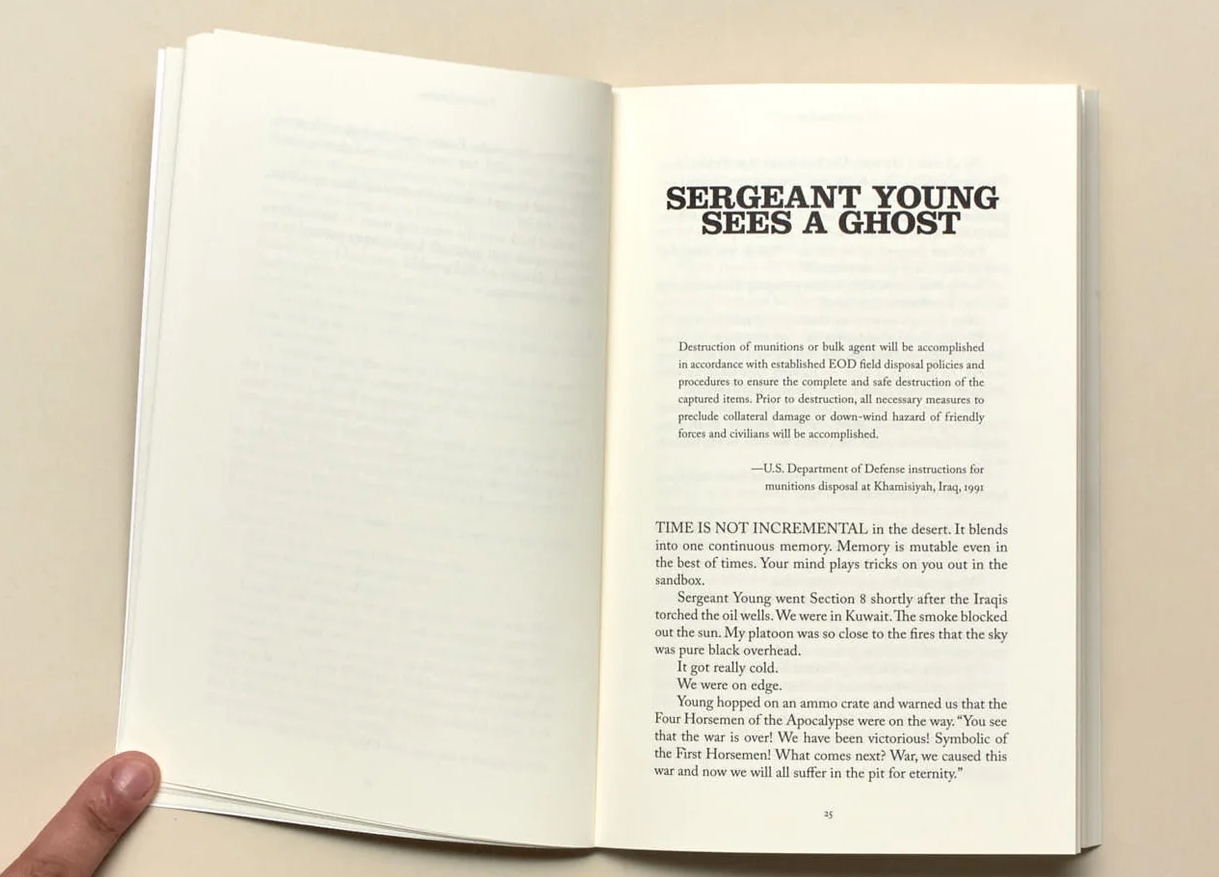

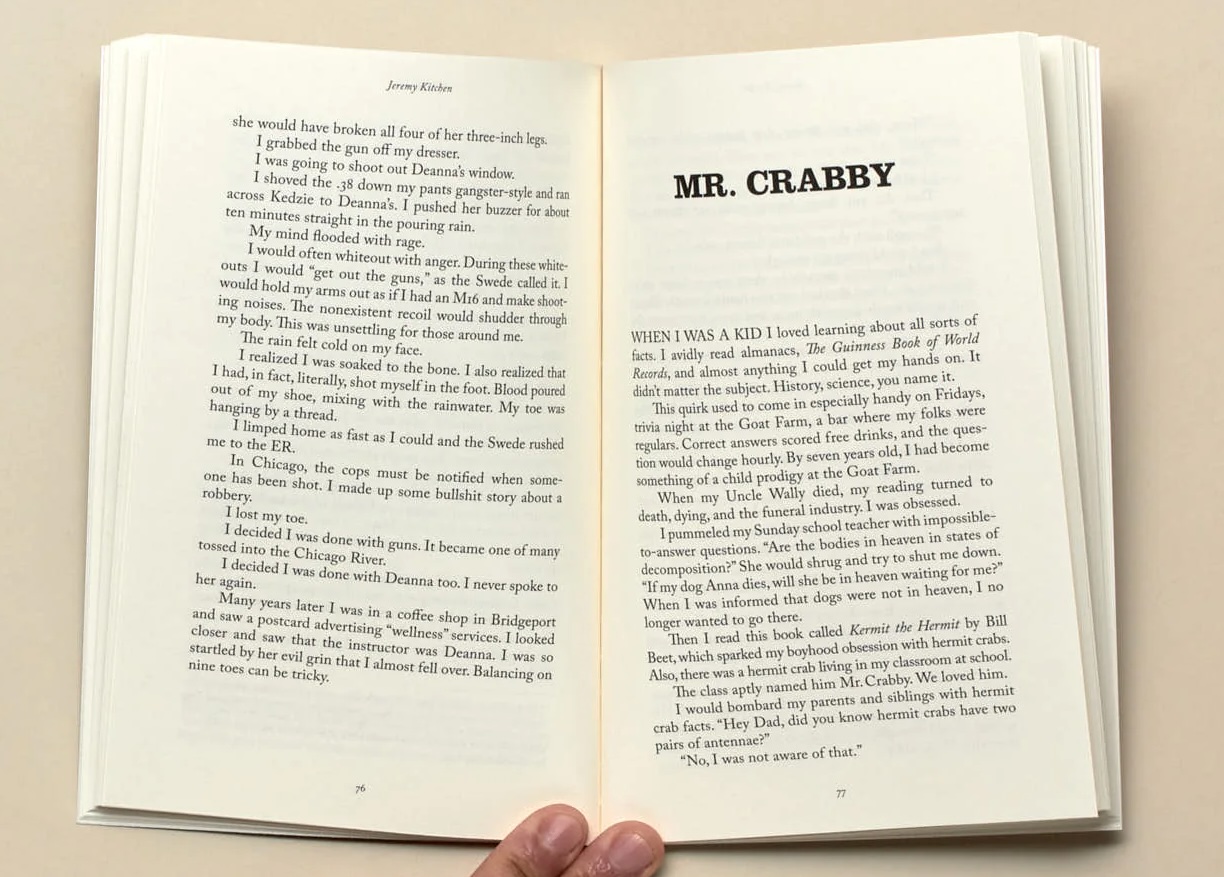

 Anne Carson Wrong Norma
Anne Carson Wrong Norma



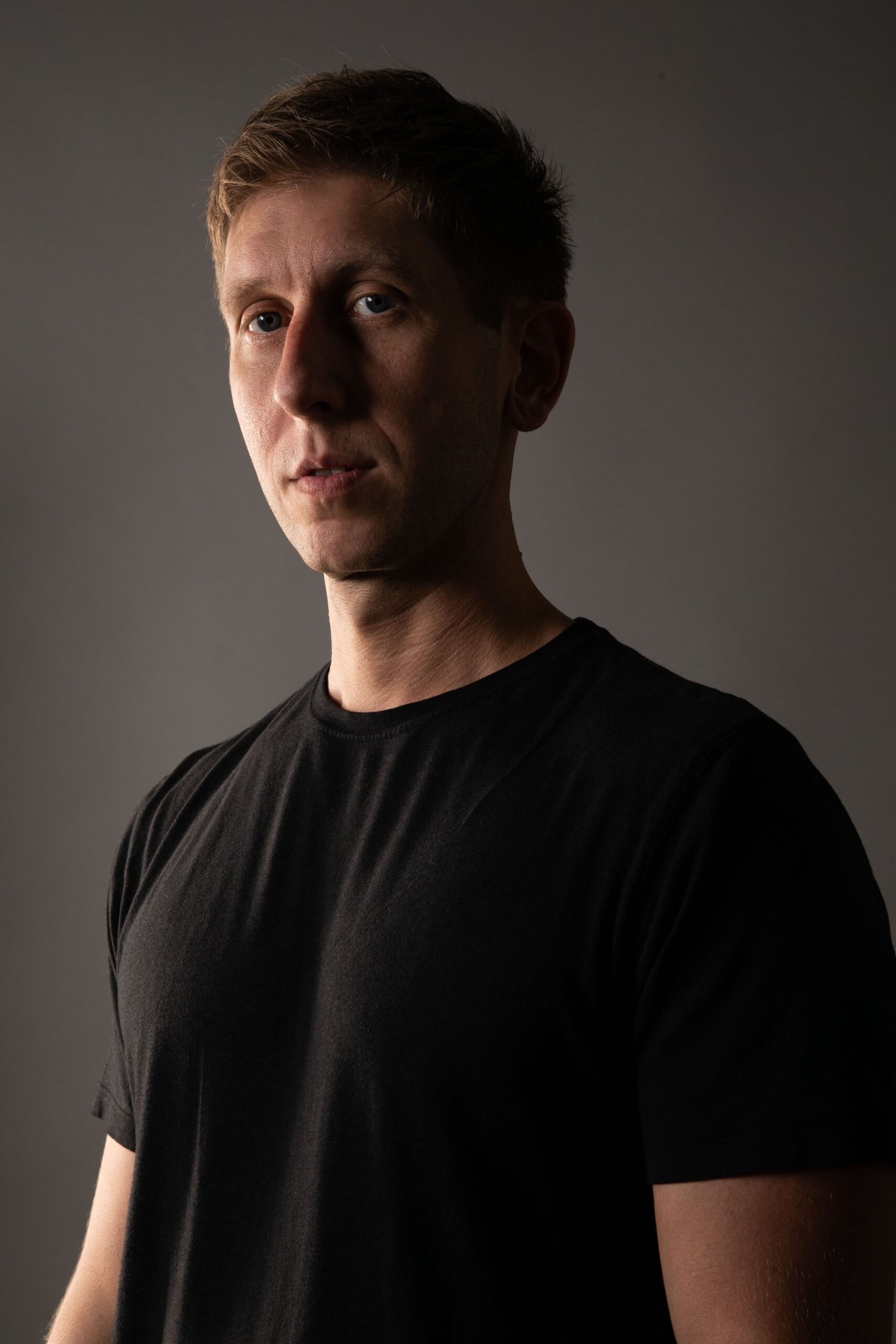
 Chris Zeischegg Creation: On Art and Unbecoming
Chris Zeischegg Creation: On Art and Unbecoming



 Now available in North America
Now available in North America 